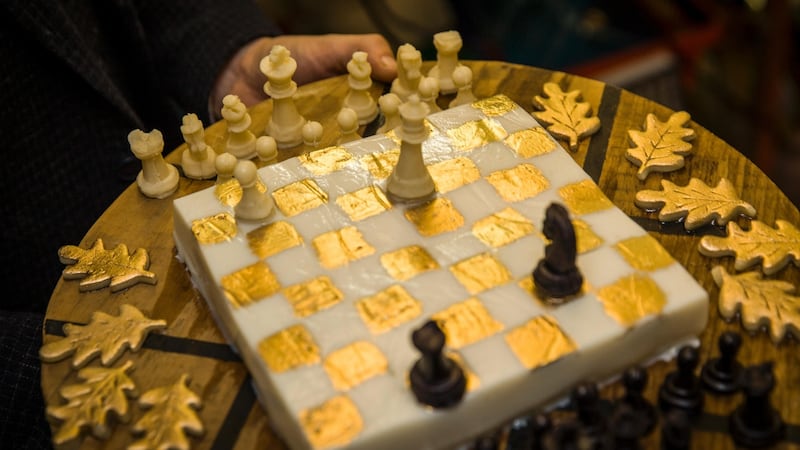Does history repeat itself, first as tragedy, the second time as farce? "No, that's too grand, too considered a process," Julian Barnes considered. "History just burps, and we taste again that raw-onion sandwich it swallowed centuries ago."
In Lords and Ladles (RTÉ One, Sunday, 6.30pm), now firmly in its third series of dietary revivals, we are treated to yet another dinner in yet another of Ireland's Big Houses. This time it's the 17th-century grand stately pile of Kilruddery House in Co Wicklow, held by the Brabazon family since the early 16th century, or the first full conquest of Ireland. Bon appetit!
The menu is a Tudor-era feast, including not only the warm belch of how your ancestors or their landlords used to eat, but something that even more pungent. “Farts of Portingale,” reads the menu. Really?

“Really,” says the voice over.
Now, this is typical of the show, which attempts to fold a light, contemporary touch into a stiflingly reverent history lesson, resulting in something that is appetising in outline and almost indigestible as an experience. The menu, for instance, is always more interesting than the digs, but while the show barely investigates the origins of the former (revealed, as though by magic, on a scroll in Marsh library), it force feeds you with the latter.
"I could stay here all day," the chef Derry Clarke politely tells the umpteenth Earl of Meath over a scrolling genealogical tapestry of transferred titles and coats of arms. "I think we have been here all day," says his host. I'm not sure he's joking.
Assigned their roles randomly each week, either to cook, gather ingredients or solicit the family history, the chefs are Clarke, Paul Flynn and Catherine Fulvio. Though they snip at each other constantly, they seem to get on like a Tudor house on fire. This week's menu, however, requires immense amounts of meat and varying degrees of cruelty that sends the show into a spiral of confusion.
One dish requires wild boar. “Spoiler alert!” trills the gratingly cheery, hopelessly over-used voiceover. “No wild boar was killed in the making of this programme – or at least not by us!”
Uh-huh. But how do you feel about the wild deer that is shot in the making of this programme, specifically by you, to meet the demands of a baked venison dish?
Uncomfortable, I would guess, given how many times we are assured about clean shots, necessary culls and instant death. “I have a healthy respect for him now,” says Fulvio, over the bloody beast.
Which brings us to the capons, cockerels castrated to make them more sluggish and therefore fatter, before slaughter. “It’s a mangy, auld, manky, horrible looking bird,” says Flynn, when the meat proves insufficient and inedible. Talk about adding insult to injury.
In other regards, though, Lords and Ladles is consistent, reusing the same jokes so many times you actually become nostalgic for earlier utterances.
“In days of yore, a fart was a small spherical tidbit,” explains Flynn. “Your farts smell lovely,” he says a little while later. “At last, the farts make their way to the table,” says the voice over. (Ok, I laughed at that last one.) But the table, attended by the family and their pals, always looks absurdly stuffy, featuring no conversation other than bemusement at the meal and merry protests of a full tummy.
Presentation is important in cooking, and the table's centrepiece, an almond and jelly chessboard "soteltie", reminds you of it. Lords and Ladles has some great ingredients, but with its overcooked format and fawning deference to the hosts, they are rarely well served.












